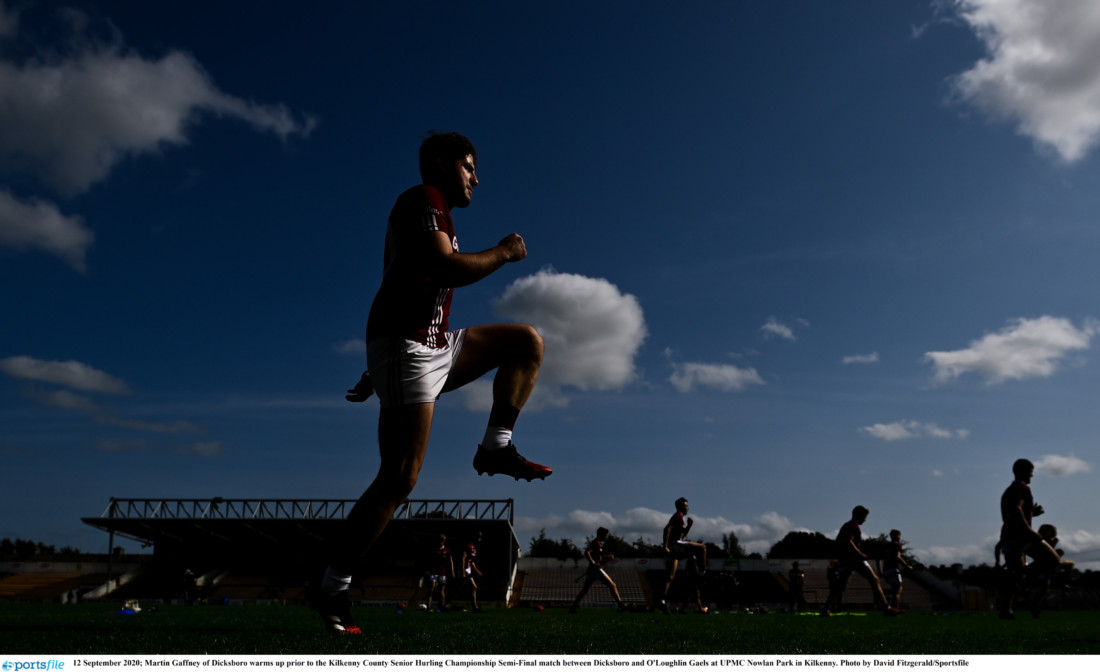By Peter Nugent
IN GAA circles, players are constantly reminded of the need to be conditioned to certain standards to play the game efficiently.
These standards and criteria will vary from coach to coach. Indeed, this lockdown has given me a real insight into the training loads being imposed on players at both club and county levels. Multiple 5km runs per week, heavy volume 200-metre runs x 12 with low recovery between sets and tempo runs as far as the eye can see.
The volume-heavy prescription in many cases can be reasoned with if players are given adequate recovery between sessions, but when you consider many players currently have a schedule that roughly resembles five sessions per week split across pitch and strength resistance training then it soon becomes clear that recovery can be an afterthought.
This kind of erratic programming will ultimately lead to burn-out and or overuse injuries. As a GAA player at club or county level, one of your basic remits is to remain injury free. This helps you as you will be available for practise and games. It aids the team as the more fit players available the better the chances of success and it certainly benefits the management and coaching staff when you consider we operate in a results-based environment.
One of the often-overlooked areas of GAA player preparation is foot health. Let’s consider the needs of the sport and the relevance of a good strong pair of feet.
During games and training, players kick the ball (well some teams more than others), and players will cover ground in a range of different movement patterns – slow jog, half pace, accelerations, decelerations, curvilinear movements, change of direction, sudden stops, max velocity linear, bilateral and unilateral movements, jumping, landing, side-steps. I’m sure I could go on, but you get the picture.
When we look at that list, the demands placed on our feet are extensive. Walking and running alone will not prepare your feet for the demands of the game. Coaches should look to incorporate plyometric feet work exercises in their warm-ups as a means of building resilient strong feet.
But what do I mean by plyometrics? Plyometric training incorporates the use of jumps, hops, bounds and skips. During an activity like running our feet continuously strike the ground and then leave it again in a reciprocal fashion meaning when one foot leaves the ground the other is quick to contact it.
The time period in which the foot is in contact with the ground is known as ‘GCT’ – ground contact time. During sprinting for example, the foot GCT can be anywhere from 80 – 90 milliseconds. Factor in that when we sprint, we are driving our feet off the surface to propel our bodies forward and away from the ground then you can understand that robust and resilient feet are going to help you perform well in field sports.
When consistently applied, the benefits of lower body plyometrics will have a positive effect on speed, power, change of direction, balance, jumping, kicking and bone density.
A small three-minute window in your warm-ups can build stiffness, rhythm, and coordination as well as strengthening the foot/ankle complex and lower limb. Here are some plyos that you can incorporate:
– Pogo jumps – double and single leg
– Single leg hops – side to side
– Single leg hops – back to front
– Exaggerated bounding – alternating legs
– Skipping rope routines
Receive quality journalism wherever you are, on any device. Keep up to date from the comfort of your own home with a digital subscription.
Any time | Any place | Anywhere












